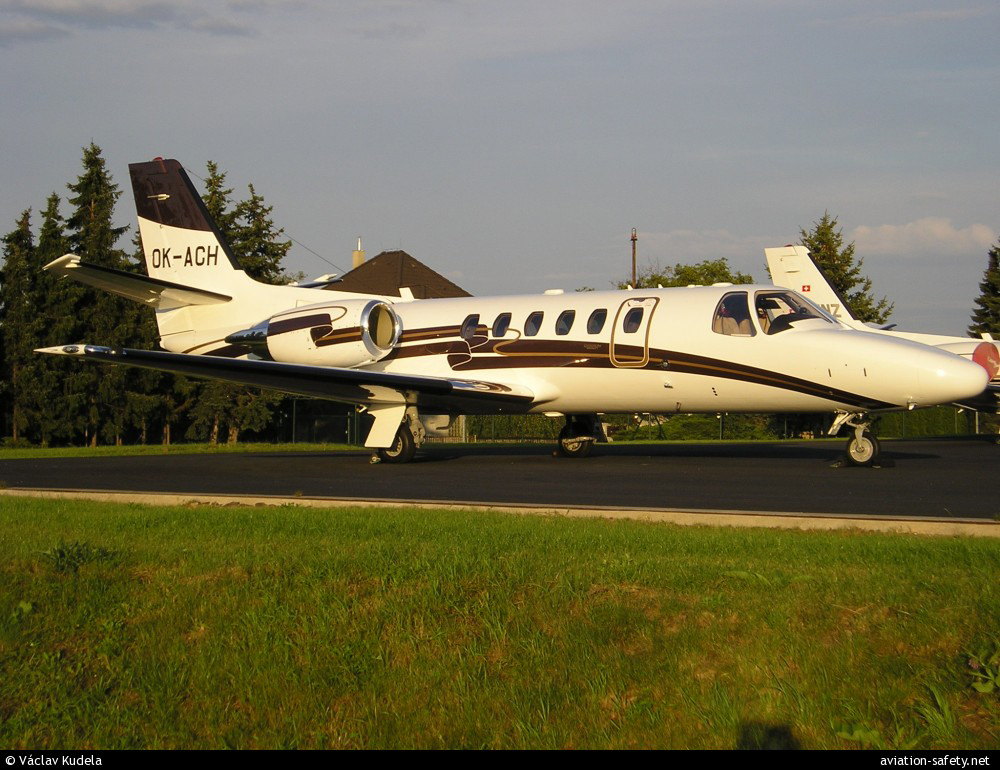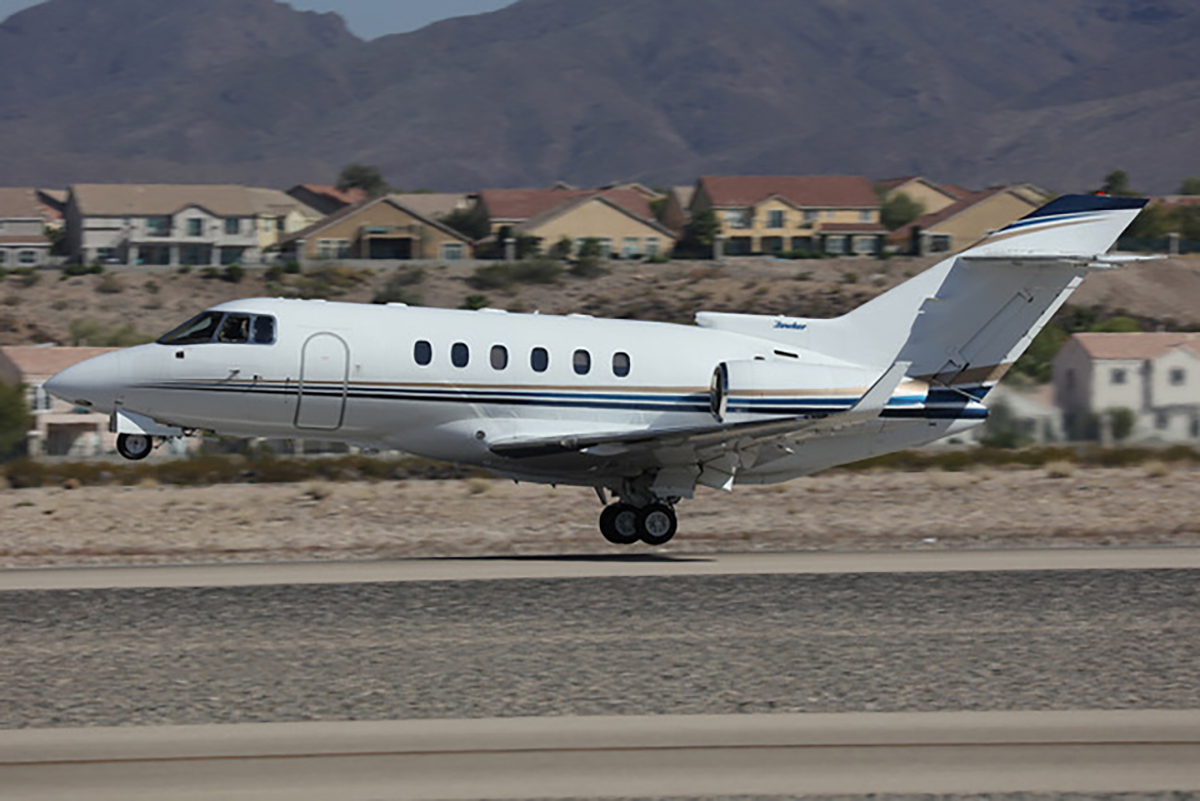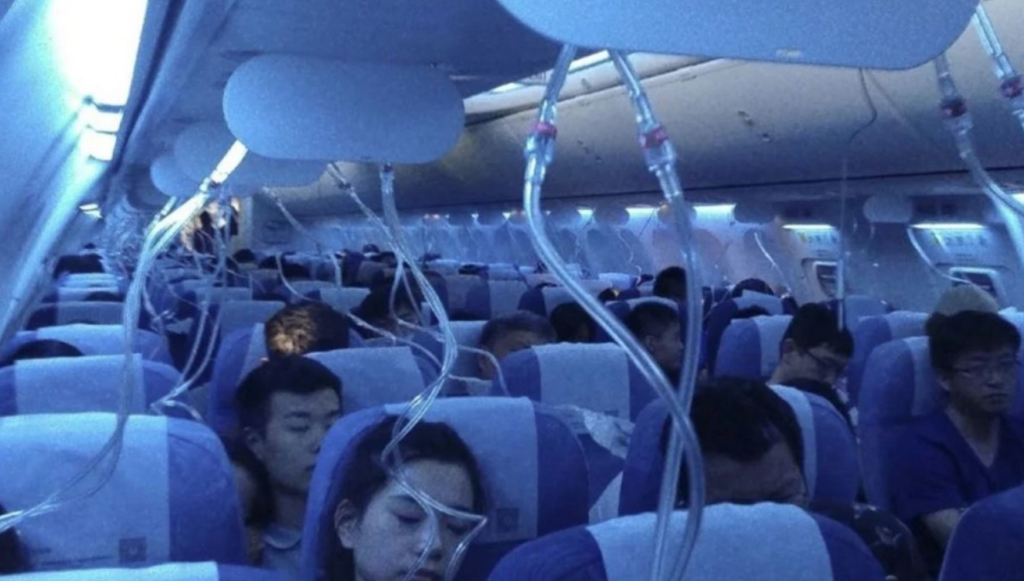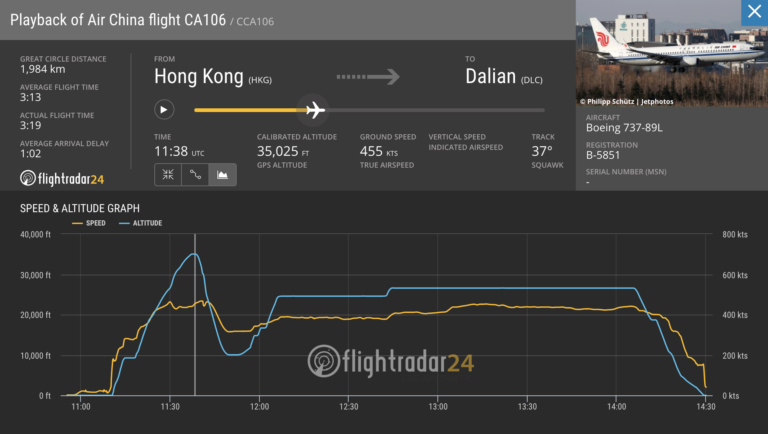We aren't as smart as we think we are. I need a reminder now and then, but whenever I am reminded, I seem to fall for the trap again. Fortunately, my biggest mistakes are ancient history. (I'll reveal that here shortly.) But it seems we pilots as a breed never run out of ways of being stupid. I think the best way to learn how not to be stupid is to look at others who are. It may be worth a laugh — "I would never do that!" — but keep in mind you may be tempted to do something along the same lines. You must always be on guard for the next stupid thing.
— James Albright

Updated:
2018-09-10
There is no shortage of stupid in the pilot pool, it seems to be a phase some of us go through. Yes, me too. I went through my phase in 1981, before the advent of cell phone cameras and FOQA. The other advantage that I had was we lieutenants in the Air Force were expected to be stupid back then. It was part of our blood thirsty killer training. The Air Force, fortunately, grew out of that mindset. But before I start throwing stones from my glass house, let me fess up about my worst act of stupidity. Then we can move on to more recent examples.
The 90 / 270 (1981)
It is a trite saying among some pilots: "I feel the need, the need for speed." I've flown supersonic a few times and it was a bit of a let down. In a well designed airplane (designed for this kind of thing) your only indication that you are leaving your own sound behind you is the airspeed indicator and perhaps a "blip" on the altimeter when the shock wave passes the static ports. Yawn. When I was 25 years old my need was for G.
I filled that need with my Cessna T-37B. How did I come into possession of a twin-engine, fully aerobatic jet? That's a story in and of itself. But briefly, it involves the Vietnam War. At its height, the war required the Air Force to produce about 2,000 pilots a year. Airplanes were not as reliable and the Air Force tolerated a lot of accidents back then. The airlines vacuumed up any Air Force and Navy pilots finishing initial commitments and you ended up needing a lot of T-37 and T-38 training aircraft. Meanwhile, B-52 bombers and KC-135 tankers flew heavy rotations in Southeast Asia. When the war ended, the Air Force chopped pilot production to only 500 pilots a year and flying time in the B-52 and KC-135 dried up. In a rare act of brilliance, the Air Force sent excess trainers to B-52 and KC-135 bases to "season" copilots. I ended up at Loring Air Force Base, Maine after a major drug bust sent half the KC-135 copilot force to the stockades. Most of my crop of copilots didn't want the extra flying time so whenever I felt the need for G, I had my own T-37.
I ended up doing most of my T-37 flying with Bernie, another KC-135 copilot. His only goal at that time was to get enough flying time to qualify to upgrade or leave for the airlines. The standard routine was to leave on a Thursday, fly anywhere else for a few days, and come home by Sunday night. Most copilots went someplace warm, sat for a few days, and came home. Bernie insisted on logging 6.5 hours each day, the maximum allowed by regulation for these kinds of things. We would fly someplace, and then burn up the traffic pattern until at minimum fuel. After a while one touch and go landing after another got boring.
We were back at Loring after four days of flying and had about 30 minutes of fuel left. I flew a standard overhead pattern to a touch and go and gave Bernie the airplane. After his touch and go on Runway 19 he climbed to about 500 feet and told tower, "Request a 90 right, 270 left, touch and go runway one."
"Approved as requested." Bernie snapped the airplane into a 90° bank roll to the right and pulled about 3 G's. Things were happening so fast I could only watch, glued by the G forces into my ejection seat. Once perpendicular to the runway, he reversed his roll to the left. A few seconds later we were on final to Runway 1. He landed the airplane, pushed the power up, took off again and said, "your airplane."
I pointed the nose up and climbed to 500 feet and keyed the mike, "request 90 left, 270 right, touch and go runway nineteen."
"Approved as requested." And that's how we spent the rest of our fuel. Nobody asked how it was we could fly from Portsmouth, New Hampshire to home base, and still have enough gas for eight touch and go landings and one full stop landing. Those 90/270 patterns happen fast.
Of course this wouldn't be much of a story if it ended there. It doesn't. Over the next few months we repeated the low altitude G-fest, gradually increasing the initial pull to 5 G's and lowering the starting altitude to just under 100 feet. It never crossed either of our minds that perhaps what we were doing was a little dangerous. (Besides violating half a dozen Air Force regulations.) Then one day we discovered the triangular runways at McGuire Air Force Base, New Jersey. So instead of doing a 90/270, we could fly a very tight 270° continuous turn from one runway to the next. We showed up early Sunday morning to an empty pattern and calm winds.
"Approved as requested." After the third or fourth patterns, we didn't even have to ask. "Approved as requested." It was a blast. Finally it came time to end our fun, we were at "Bingo Fuel."
"Gear down, full stop," I said after leveling the wings after our last 270° turn from one runway to the next.
"Clear to land," tower said. "And behalf of everyone in the tower, thanks for the air show. You guys never once climbed above the height of the tower. It was great."
We were rather pleased with ourselves, especially when we pulled into the transient ramp and the sight of five line guys standing at attention, clapping. "Got to like that," I said. Bernie took off his helmet and I could see a huge grin. But then the grin disappeared and the line guys scrambled. I turned my head and saw the reason. A blue and white sedan pulled up with a colonel in the driver's seat. He got out of the car and glared at us. I was in the left seat so his gaze was fixed on me. I unstrapped from the ejection seat, took off my helmet, and stepped out of the jet.
Bernie and I faced the McGuire AFB wing commander together, two first lieutenants getting read the riot act from a colonel. Most of what he said focused on professionalism and an Air Force prohibition on aerobatic flight that would endanger the public. But he also mentioned the possibility of an engine failure while we were that low to the ground outside of the ejection envelope. I hadn't thought about that. Bernie took the left seat for the ride home and got the first 90/270 in the pattern. His turn was to the right so it was me on the bottom side of the airplane as we pulled our 5 G's just a hundred feet off the deck. When it was my turn I managed to grunt out a sentence under the G load with Bernie in the left seat just above the tree tops.
"If we lose the left engine right now," I asked, "what happens?"
"We both die," he said. "But me first."
For Bernie's pattern he tried something new. A hundred feet off the deck, wings level, he pulled 5 G's straight up. The G's bled the speed off nicely and we found ourselves at 150 knots, pattern altitude, and ready to let the nose fall to one side and fly our 90/270 at altitude. "Better," I said.
Bernie and I followed each other around the Air Force for a few years. We both ended up as squadron commanders who didn't put up with stupid pilot tricks from any of our pilots. He retired at about the same time as me and started a small business in D.C. I've seen him a few times over the years and we never talk about this, our brush with stupid pilot tricks.
Oh yes, the photo. I did that with Photoshop.
The Pinnacle of Stupidity (2004)
Most of this case study is just sad. The pilots didn't understand that just because you have the thrust to climb to an altitude doesn't mean you have the thrust to hold the altitude given temperature changes at high altitude. They didn't understand that a swept wing airplane doesn't necessarily stall with the clean nose drop of many straight wing airplanes. They didn't understand the need to break the stall with an aggressive decrease in the wing's angle of attack. They didn't understand engine restart procedures for their aircraft. But most of all, they didn't understand the discipline required to fly professionally. Very sad.
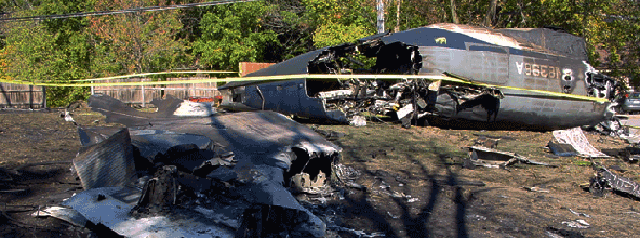
Pinnacle Airlines 3701 wreckage, from NTSB
This crew was nominated for a Darwin Award in 2004 and rightfully so. There was talk of a "Four One Oh" Club in that airline where membership was limited to pilots who had made it to the aircraft's service ceiling. These pilots are posthumous members.
For more about this: Accident Case Study: Pinnacle Airlines 3701.
Have you already? (2010)
The SIC was the more senior and was said to have been a fighter pilot wanna be. The PIC was fairly new but appeared to be willing to play the game. What you ended up with was two pilots trying to prove they had the right stuff by doing a roll at night. Neither had been trained to do any such thing in the day, much less at night. I wonder if they realized that any sane fighter pilot would have declined the offer. But it all begins with "Have you already?"
- Take-off took place on runway 31. The co-pilot was Pilot Flying (PF). The flight was conducted manually, neither of the two autopilots was engaged. From 2012 hrs on, after a right hand turn, the flight proceeded toward the north. The airplane was in climb attitude. At 2014:16 hrs, still in climb, the PIC said "I didn't fly night time for long time". The co-pilot asked: "Have you already experienced a roll during night?" She answered laughing: "Yes, really." He: "Better we won't." She laughing: "Do you enjoy that thing?" Co-pilot: "You are the first one with whom I talked about it, don't tell it [...]." PIC: "Whom shall I not tell?" [...] She again: "I also do it always, but I persuade [...] to do that." Co-pilot: "[...] Bravo does it better." At 2015:00 hrs, during this short conversation, the crew received the instruction from ATC Prague to climb to FL 260 and to level off above reporting point DEKOV. The conversation in the cockpit continued. Co-pilot: "Bravo does the roll faster with the ailerons but the spoilers are slower." At 2015:33 hrs ATC repeated the instruction. At 2015:40 hrs the PIC acknowledged the instruction.
- Between 2017:10 hrs and 2017:20 hrs the airplane rolled about its longitudinal axis; initially to the left up to a bank angle of 30°, and right afterwards to the right up to a bank angle of 20°, then back again to the horizontal. At 2017:20 hrs the PIC responded to it with the words: "Let's go, we are already high enough, you nettle me - come on [...]." At 2017:22rs ATC Prague instructed the crew to contact ATC Munich; at 2017:35 hrs the PIC confirmed the instruction. At 2017:42 hrs she said: "Later but." The co-pilot replied: "Let's do it at higher altitude."
- At 2018:29 hrs, the PIC contacted ATC Munich. At 2018:36 hrs the crew received the instruction from ATC Munich to climb to FL 330.
- At 2019:00 hrs the airplane leveled off in FL 270, at 2019:05 hrs the airplane nose moved upward until a pitch angle of about 14° was reached. At 2019:09 hrs the aircraft began to roll about its longitudinal axis to the right. Within 4 seconds the airplane reached the inverted flight attitude and in another 4 seconds it rolled another 90°. Simultaneously the heading changed right toward the east, then toward the south and finally toward the west. During the roll the pitch angle decreased to almost -85° which is almost a vertical nose dive. The computed airspeed increased significantly.
- The airplane crashed near Reinhardtsdorf-Schöna, Saxon Switzerland, about 500 m north of the border to the Czech Republic.
Source: BFU Report, ¶1.1
Wow (2017)
A professional photographer who attended the NBAA BACE in 2017 sent me a series of photos he took from Henderson Field, Las Vegas. His subject line read, "Is this safe?" I've redacted the N-number with PhotoShop but provided it to another friend who traced the aircraft operator and contacted the FAA. The Feds, however, said they don't have the time to track down every stupid pilot. I hope these two stupid pilots don't destroy their lovely airplane or get anyone (including themselves) killed.
The best discussion on the web about this is at the Rapp Report, presented by a friend of mine, Ron Rapp. Here is his description followed by the most amazing comment.
Ron Rapp: "I’ve been flying turbine aircraft for more than a decade now (jeez, time flies!), and with few exceptions, those with whom I’ve shared the cockpit have operated in the consistently safe and professional manner one would expect from an aviator who makes their living flying airplanes.""
Ron Rapp: "You’d think this would go without saying, but unfortunately corporate and charter pilots don’t always have the resources or limitations you’d find at a major airline. As the Bedford G-IV accident illustrates, this is especially true of private (Part 91) flight departments. Some of them are run as professionally as any Part 121 airline, while others… well, let’s just say they leave something to be desired when it comes to standards, training, and safety culture.""
Ron Rapp: "But every now and then you come across something so egregious that you almost can’t believe what you’re seeing. For example, take a look at this sequence of photographs, which were sent to me by a friend. This Hawker was departing from the recent NBAA convention in Las Vegas, the one place you’d expect a business aviation pilot to be on his or her best behavior.""
Here is a sequence of the photos: video.
Bizjet flyer: "We do that all time when no passengers on board, it can be done safely. We even do that at high density airports . Have to know your limitations. It’s a great feeling living on the edge sometimes.""
Ron Rapp: "Wow."
Social Media Stupidity (2017)
Stupid pilots these days have at least two big disadvantages: cell phone cameras and social media. Whomever put the video together had the ability to black out the registration number on the center engine with a fair amount of skill. So this was more than just a case of "watch this" and a spur of the moment desire to get famous. It also demonstrated the video's producer knew this could get them in trouble. And yet they had no problem showing the stupid pilot's face. Odd.
Air China: Vaping With Lives (2018)
This 2018 incident got a lot of laughter aimed at the pilot's expense, rightfully so. But most of the laughter was due to the pilot's stupidity causing the cabin pressure loss and deployment of the oxygen masks. That was bad enough. But the real part of stupid was the decision that followed.
(I believe these masks are powered by chemical oxygen generators that are good for about 15 minutes. With the masks deployed, the oxygen will have been depleted by the time the airplane returned to altitude, leaving the passengers without an emergency supply should the airplane had a real depressurization from that point.)
The Boeing 737-800 descended from 32,000 feet (10,000 meters) to 13,000 feet (4,000 meters) in approximately nine minutes, according to Chinese officials. Playback of Air China CA106 from FlightRadar24 also shows the incredible change in altitude:
Air China will fire the pilots of an aircraft that plummeted 25,000 feet in 10 minutes, after a vaping incident gone wrong.
“After an investigation to verify the incident, the decision is to suspend the related crew from flying and terminate the contracts in accordance with the law. The crew members who are responsible for the incident have been seriously dealt with,” the airline said on Friday night.
Its statement, issued on the Chinese microblogging site Weibo, also recommended that the Civil Aviation Administration of China (CAAC) revoke the pilots’ licenses after completing their own investigations.
Flight CA106 left Hong Kong International Airport on Tuesday evening for the northeastern city of Dalian, carrying 153 passengers and nine crew members.
Half an hour later, oxygen masks dropped from the ceiling, and the plane descended to 10,000 feet.
The Boeing 737 subsequently climbed back to 26,000 feet and arrived safely at its destination. No injuries were reported, and the aircraft was not damaged.
The CAAC, which seized the aircraft’s flight data and voice recorders and interviewed crew members, said preliminary investigations found that the co-pilot had, without telling the pilot, tried to turn off a circulation fan in order to prevent smoke or smells from his e-cigarette from reaching the cabin.
“[But the co-pilot] mistakenly switched off the air-conditioning unit that was next to it, resulting in insufficient oxygen in the cabin and an altitude warning,” said Qiao Yibin, of the authority’s safety office, at a press briefing on Friday, according to the state-run Xinhua news agency.
Air China’s website says smoking is strictly prohibited on all its flights. It is clearly stated that e-cigarettes are also banned.
Aviation experts also questioned the pilots’ decision to continue with the journey despite having used up emergency oxygen supplies after the sudden descent.
David Newbery, president of the Hong Kong Airline Pilots Association and a Cathay Pacific Airways pilot, said: “If the oxygen masks had been deployed, it would be foolhardy to [continue flying] because there would be no oxygen left in the event of a subsequent depressurization.”
Source: www.inkstone.com
Survival Tips
This all seems pretty bleak, doesn't it? It almost seems like an irresistible force (stupidity). It afflicts mostly the young, but old and experienced aviators who should know better get bitten too. How can you prevent this from happening to you? How can you talk some sense into someone who appears to be under the grips of pilot stupidity?
- Realize the airplane doesn't belong to you.
- Realize your training doesn’t cover everything you might be doing.
- Realize that the airplane’s manufacturer hasn’t tested the airplane beyond regulatory requirements and that your knowledge of the airplane's characteristics will never be complete.
- Realize the airplane isn’t as sturdy as it was on day one.
- Realize the 50% engineering pad is a lie.
- Realize more lives are at stake other than your own.
- Realize the issues after you are gone.
- Realize Social Media Cuts Two Ways.
- Realize the Morality Issue Trumps All.
The owner (airline, company, individual) has entrusted the airplane in your hands. The contract you signed assumes you are acting in good faith. Even when the principal isn't on board, you owe it to him or her to behave as if he or she were. Beside, in today's era of cell phone cameras, ADS-B, FOQA, etc., they might as well be on board 24/7.
I think if you could have frozen the night Citation roll pilots just prior to impact and asked them what went wrong, they would still be clueless. They had probably rolled other airplanes and everything worked out. Even at night. They may have rolled the same aircraft. But they didn't have the training, experience, or ability to do what they thought they could do. And now they are dead.
If you are doing something that has never been done before, even something that seems fairly tame, you have no guarantee about the outcome. Study the case study of Air France 296 to see how even a company test pilot can end up surprised and killing people as a result.
When your aircraft was certified, it was brand new. Some of the certification parts, such as the brakes, have to be pre-worn, but for the most part it is a new airplane. Just as importantly, all the parts are manufacturer approved and installed correctly. By the time you get to the airplane, you don't know about any of this. There are many cases of material fatigue causing aircraft to fail, even when the aircraft is operated by the book. (See British Airways 5390 for a bizarre case.) If you have a 2 G wing that has never operated above 1.5 G for its entire lifespan, taking it to 2 G is an act of faith in all who have had anything to do with the airplane before you.
When I was in pilot training we had pilots who believe our T-38's 7.33G limitation was a cautious number and that the engineers had reduced it by 50 percent. We could actually pull (1.5)(7.33) = 11 Gs. The mere fact 7.33 was a messy number derived from 11, a clean number, was proof enough. But there is nothing in certification rules about such a 50% pad. During my year in pilot training (1979) we had a number of pilots killed when the wings snapped off. The Air Force investigated and found nearly half the fleet had cracked wing spars.
When the Pinnacle Airlines flight was descending to its demise the pilots were playing a game of Russian Roulette with the public at large. As it was, they crashed behind a row of houses. The only fatalities were the two pilots on board, but it was only a matter of luck that the death toll didn't reach the hundreds. If that had happened, the pilots would have been guilty of manslaughter.
Let's say your final act costs you your life. It doesn't end there. You will have family members and friends who have gone through life thinking you were the "pilot's pilot," an epitome of professionalism. Now they will have to doubt that. Your family can be found liable for the financial losses. They will certainly be left with the grief of it all.
Much of our culture is consumed with showing the rest of the world that they have amazing lives and are doing amazing things. And here you are having an amazing life and doing amazing things. In a race to show how amazing they are, many on Facebook and YouTube push the envelope into stupidity. And once it is on line, there is proof of that. I warn my children that everything they post on social networks can and will be used against them when applying for jobs. Ditto for us pilots.
Finally, remember that many of these acts of stupidity are simply wrong. 'Nuff said.
From my in box
I get a fair amount of email in reaction to things I write and every now and then some of that email impacts the way I think. I knew intuitively the problem with many stupid pilot tricks. For me, the bottom line was the last of those I gave as Survival Tips: it is just wrong. But I also know that saying that something is morally wrong doesn't really register with many people. So this email came in and made me realize that the bottom line answer was in front of me the entire time.
James,
For me it comes down to the personal recognition that it isn’t my airplane. I’ve been entrusted with a very expensive asset that belongs to someone else. I would never want to do something that violates that trust. Earlier this year an aircraft became disabled on the runway as we entered the traffic pattern at our home airport from an empty leg home. The airport doesn't have a tower and we had already canceled IFR. From talking to airport operations on UNICOM we learned it would be approximately 30 minutes till they could get the aircraft off the runway and perform a FOD inspection. Years ago I may have seen this as an opportunity to sightsee around town, perhaps even as an opportunity to circle my house, but you know what, I wouldn’t even consider it now, and didn’t. With great trust comes great responsibility. The last thing I want is my handling of a situation to be conceivably viewed as being foolish or irresponsible. In this situation I felt the responsible options were to either depart the pattern with an IFR clearance to a holding pattern or remain in the traffic pattern; and that’s what we did.
A Long Time Reader

References
(Source material)
German Federal Bureau of Aircraft Accident Investigation (BFU), Cessna 550 B Citation Bravo 14 February 2010, State File Number BFUCX001-10
NTSB Aircraft Accident Report, AAR-07/01, Crash of Pinnacle Airlines Flight 3701 Bombardier CL-600-2B19, N8396A, Jefferson City, Missouri October 14, 2004
pointmetotheplane.boardingarea.com, Air China Pilot Fired for Vaping in Cockpit, Dropping Oxygen Masks, Sam Roecker, July 13, 2018
www.inkstonenews.com, "Jobs go up in smoke for Air China vape pilots," Danny Lee, Jul 16, 2018

